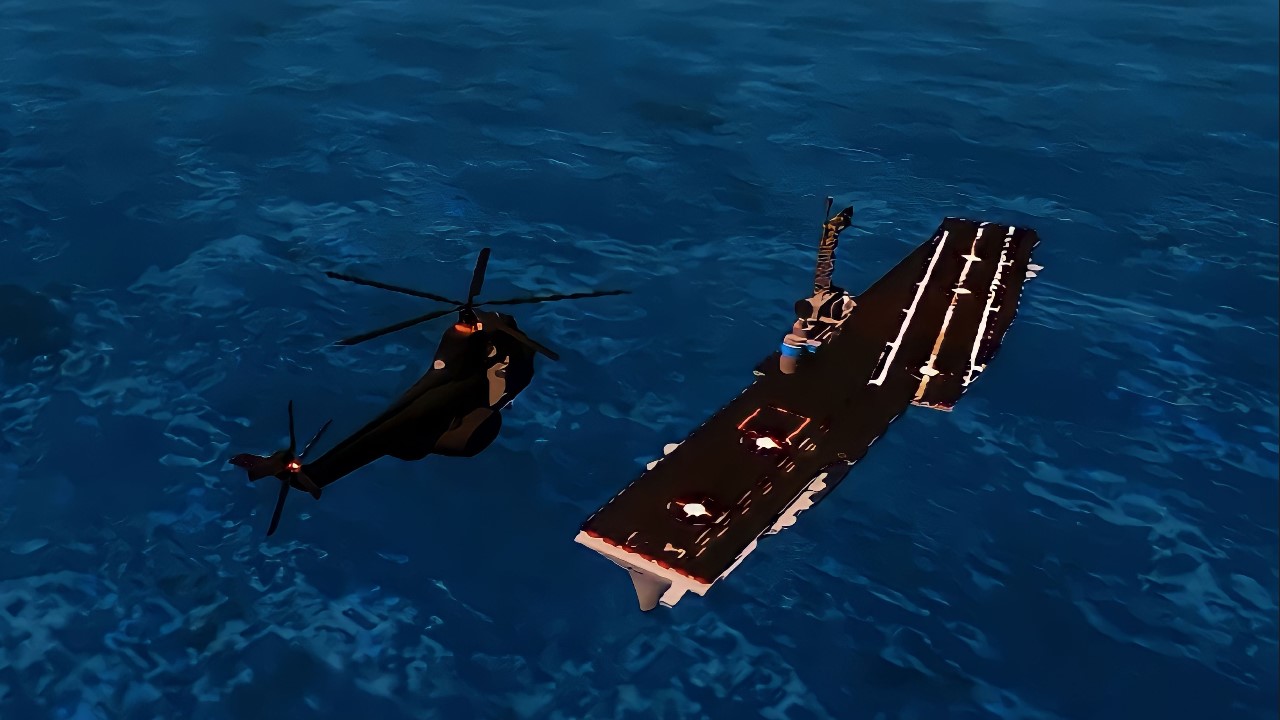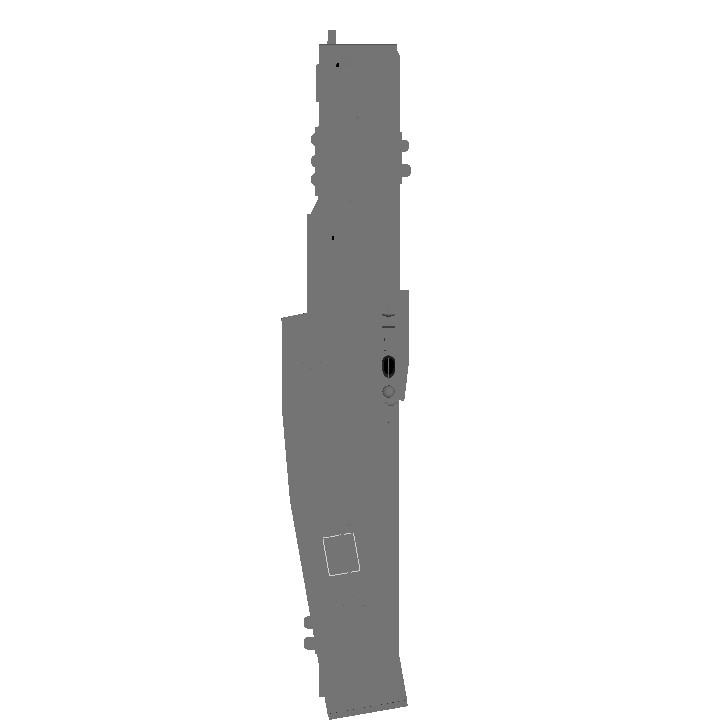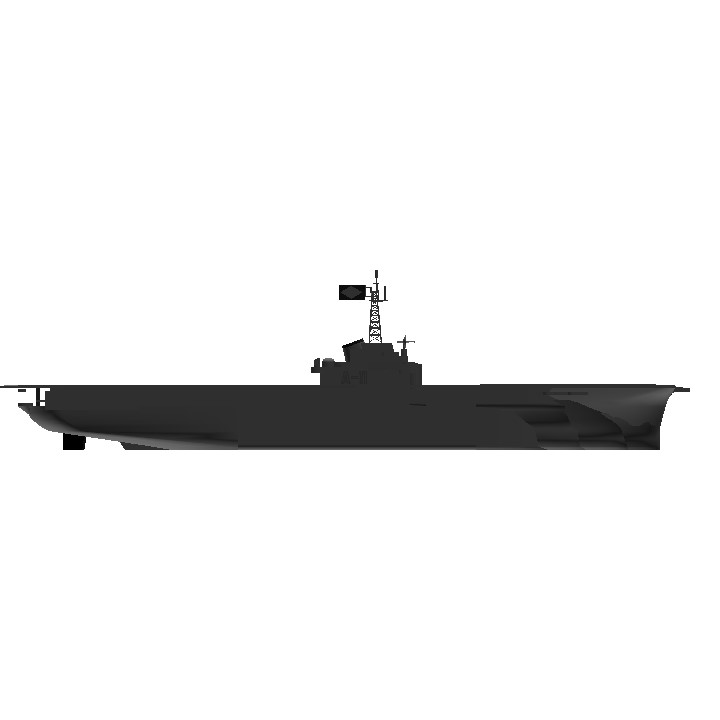The NAeL Minas Gerais (A-11) was a Colossus-class light aircraft carrier operated by the Brazilian Navy (MB) from 1960 to 2001. The ship, established by the Royal Navy of the United Kingdom during World War II as HMS Vengeance , was completed shortly before the end of the conflict and did not see combat. After stints as a training and research ship in the Arctic, the aircraft carrier was loaned to the Royal Australian Navy from 1952 to 1955. She was returned to the British, who sold her to Brazil in 1956. Her main function in Brazil would be war antisubmarine.
The ship underwent a four-year conversion in the Netherlands to make her capable of handling heavier aircraft. Commissioned in MB as Minas Gerais in 1960, she was the first aircraft carrier purchased by a Latin American nation and the second to enter service, behind the ARA Independência. The acquisition of the ship allowed MB to reconstitute its Naval Aviation, generating the problem of on-board aviation, a dispute with the Brazilian Air Force (FAB) for the right to board aircraft on the aircraft carrier. At the end of the dispute, in 1965, the Navy was complicated to have fixed-wing aircraft. In a unique situation among the navies of its time, the aviation embarked on Minas Gerais consisted from then on of FAB P-16 Tracker patrol planes, organized in the 1st Group of Embarked Aviation (1st GAE), and helicopters of the Navy. During her service in Brazil, the ship underwent several renovations. From 1987 to 1996, it became unable to embark FAB planes due to a faulty catapult, being reassigned as a helicopter carrier and amphibious assault ship. The retirement of the FAB P-16s in 1996 gave the Navy the opportunity to regain the right to operate planes, organizing the 1st Squadron of Interception and Attack Aircraft, whose jets even landed on the deck of Minas Gerais in 2001. the ship was withdrawn from service in the same year and replaced by the NAe São Paulo.
At the time of its decommissioning, it was the world's oldest operational aircraft carrier and the last operational unit of the World War II "Light Fleet" project. Despite attempts to preserve the carrier as a museum ship, and after several failed auctions (including an eBay listing), Minas Gerais was sold for scrap in 2004 and taken 
(Traduz PT-BR)
O NAeL Minas Gerais (A-11) foi um porta-aviões leve da classe Colossus operado pela Marinha do Brasil (MB), de 1960 até 2001. O navio, estabelecido pela Marinha Real do Reino Unido durante a Segunda Guerra Mundial como HMS Vengeance, foi concluído pouco antes do fim do conflito e não entrou em combate. Após passagens como navio de treinamento e navio de pesquisa no Ártico, o porta-aviões foi emprestado à Marinha Real Australiana de 1952 a 1955. Ele foi devolvido aos ingleses, que o venderam ao Brasil em 1956. Sua principal função no Brasil seria a guerra antissubmarino.
O navio passou por uma conversão de quatro anos na Holanda para torná-lo capaz de operar aeronaves mais pesadas. Comissionado na MB como Minas Gerais em 1960, ele foi o primeiro porta-aviões comprada por uma nação latino-americana e o segundo a entrar em serviço, atrás do ARA Independência. A aquisição do navio permitiu à MB reconstituir sua Aviação Naval, gerando o problema da aviação embarcada, uma disputa com a Força Aérea Brasileira (FAB) pelo direito de embarcar aeronaves no porta-aviões. Ao final da disputa, em 1965, a Marinha foi proibida de ter aeronaves de asa fixa. Numa situação única entre as marinhas de sua época, a aviação embarcada no Minas Gerais consistiu a partir de então em aviões de patrulha P-16 Tracker da FAB, organizados no 1.º Grupo de Aviação Embarcada (1.º GAE), e helicópteros da Marinha.
Durante seu serviço no Brasil, o navio passou por diversas reformas. De 1987 a 1996, tornou-se incapaz embarcar os aviões da FAB devido a uma catapulta defeituosa, sendo reatribuído como porta-helicópteros e navio de assalto anfíbio. A aposentadoria dos P-16 da FAB em 1996 deu oportunidade à Marinha para reaver o direito a operar aviões, organizando o 1.º Esquadrão de Aviões de Interceptação e Ataque, cujos jatos chegaram a pousar no convés do Minas Gerais em 2001. Entretanto, o navio foi retirado de serviço no mesmo ano e substituído pelo NAe São Paulo. Na época de seu descomissionamento, era o porta-aviões operacional mais antigo do mundo e a última unidade operacional do projeto "Frota Leve", da Segunda Guerra Mundial. Apesar das tentativas de preservar o porta-aviões como um navio-museu, e após vários leilões fracassados (incluindo uma listagem no eBay), o Minas Gerais foi vendido para sucata em 2004 e levado para Alang, na Índia, para desmantelamento.
Specifications
Spotlights
- JoovBr 2.8 years ago
- ChihiroFujisaki 2.8 years ago
- IMVICTOR 2.8 years ago
- Gabriel747 2.8 years ago
- Mvgames 2.3 years ago
- ReynaldoHeavyIndustries 1.2 years ago
General Characteristics
- Created On Android
- Wingspan 328.1ft (100.0m)
- Length 956.6ft (291.6m)
- Height 238.3ft (72.6m)
- Empty Weight N/A
- Loaded Weight 113,950lbs (51,687kg)
Performance
- Power/Weight Ratio 0.576
- Wing Loading 160.6lbs/ft2 (783.9kg/m2)
- Wing Area 709.7ft2 (65.9m2)
- Drag Points 145705
Parts
- Number of Parts 411
- Control Surfaces 1
- Performance Cost 1,001





O Mineirão
Vai Brasil!
Tentei fazer uma imagem tipo antiga e ficou um merd kkkkkkk